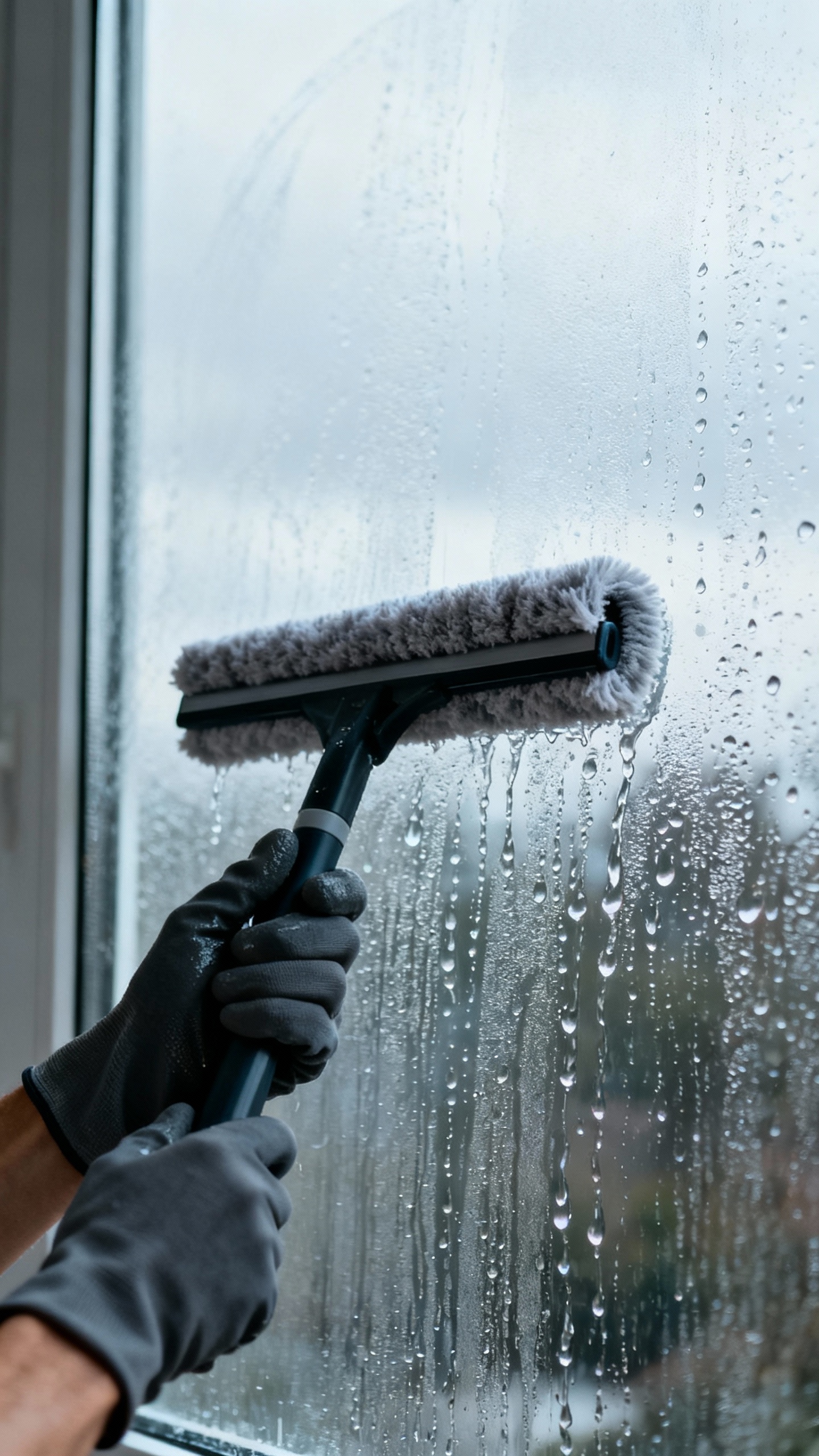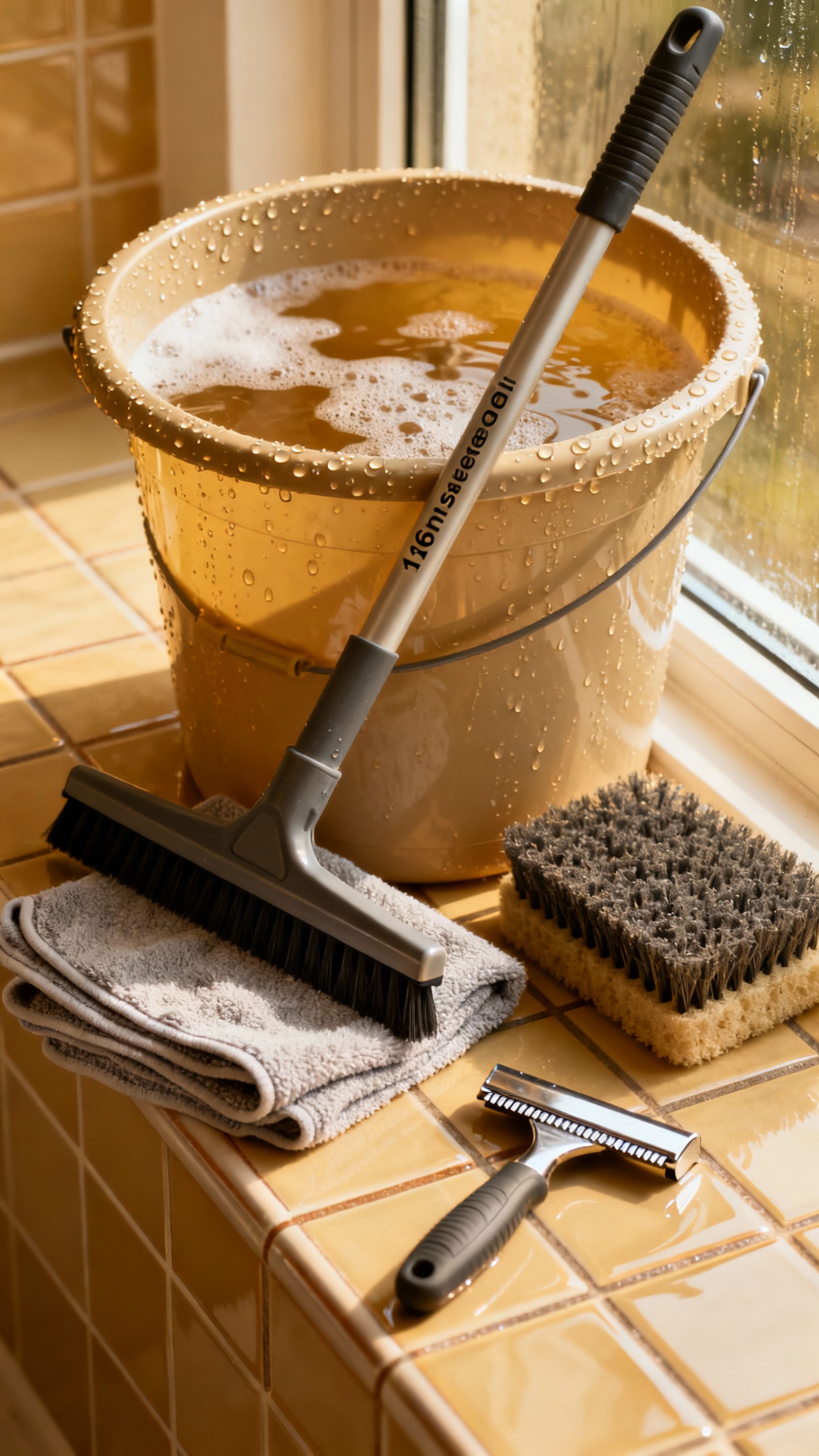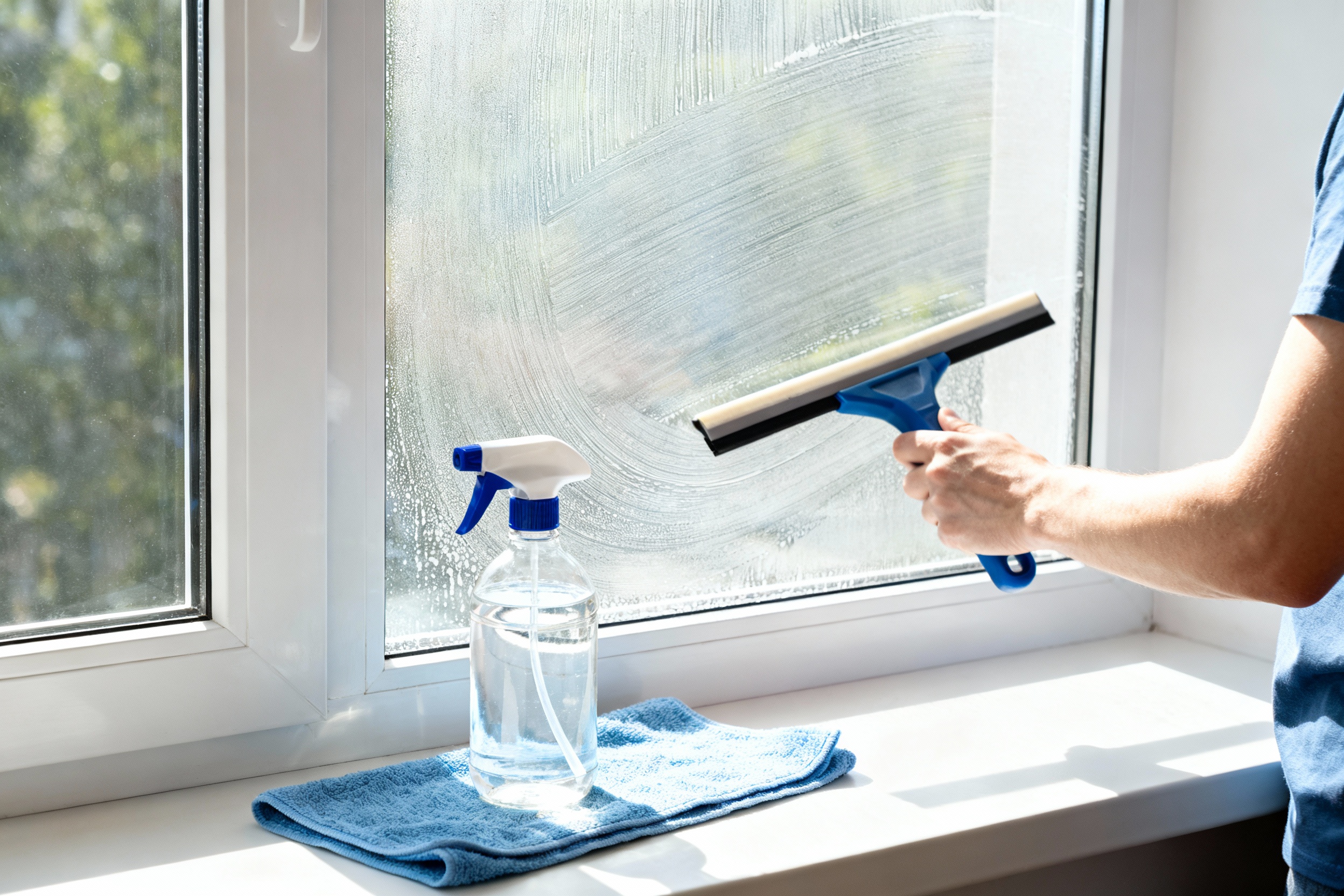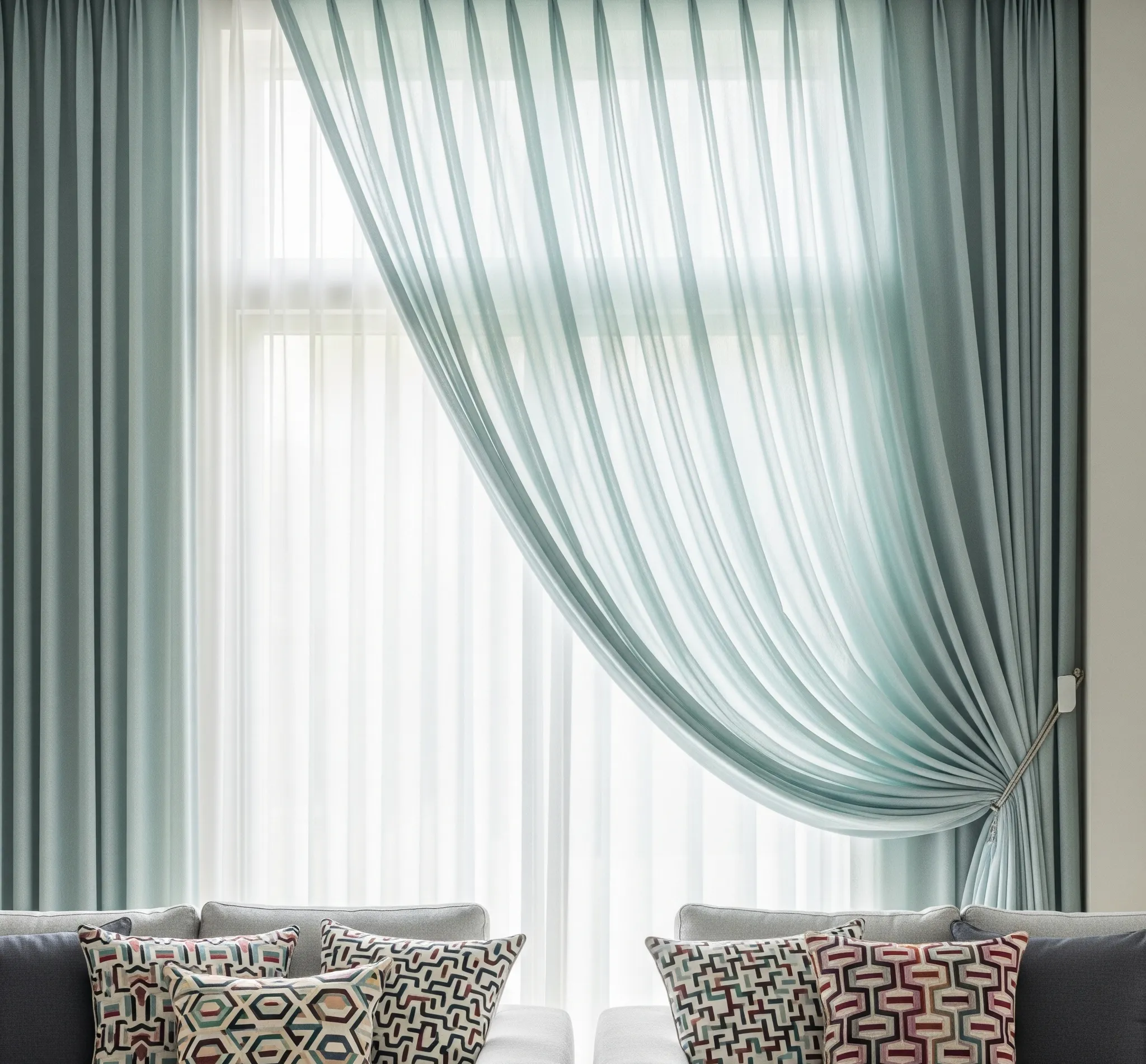Sunlight hits your window and suddenly you can see every streak, smudge, and mystery smear from the last six months. Been there. You scrub, you wipe, you buff… and somehow it still dries with those annoying lines.
Let’s fix that. Here’s the secret hack for streak-free windows, plus a foolproof routine that actually works.
The Secret Hack: Ditch Paper Towels for a Squeegee and Microfiber

Paper towels cause lint, drag grime around, and leave streaks. You know what doesn’t? A pro-grade squeegee and a clean microfiber cloth.
That duo changes the game. Here’s the fast version:
- Squeegee removes liquid evenly before it dries into streaks.
- Microfiber catches remaining moisture and buffs to a shine without lint.
- Simple solution (water + a splash of dish soap, or vinegar mix) cuts grease without residue.
That’s the hack. Everything else supports it.
Your No-Streak Cleaning Setup
You don’t need a cart of fancy products.
Keep it minimal and effective.
- 16–18″ squeegee for large panes; 10–12″ for small windows.
- Microfiber cloths (two or three, clean and lint-free).
- Bucket or spray bottle.
- Solution:
- Option A: 1 gallon warm water + 2–3 drops dish soap.
- Option B: 2 cups water + 1/4 cup white vinegar + 1 tsp dish soap (shake gently).
- Scrubber or sponge (non-scratch).
- Razor scraper for stuck-on gunk (only on tempered/glass-safe surfaces, use carefully).
FYI, skip ammonia-heavy formulas on tinted windows.

The Step-by-Step Method (That Actually Works)
Follow this order and you’ll beat streaks every time.
- Dust and dry wipe first. Knock off loose dirt with a dry microfiber or soft brush. Why push mud around?
- Soak the glass. Use your sponge or sprayer to wet the entire pane. Keep it generously wet so the squeegee glides.
- Loosen grime. Lightly scrub in circles.
Hit corners and edges where grime camps out.
- Squeegee top to bottom. Start at the top corner. Pull straight down in one smooth stroke. Wipe the blade with a microfiber after each pass.
- Overlap strokes slightly. This prevents lines between pulls. Think “shingles,” not “stripes.”
- Detail the edges. Use a clean microfiber to wipe the frame and catch any drips along the perimeter.
- Buff quickly if needed. See a faint line?
One light buff with a dry microfiber clears it.
Pro Tip: The S-Pattern
On big windows, try an S-pattern: sweep side-to-side in a loose S while moving downward. It’s faster and avoids vertical tracks. Just keep the blade clean and maintain contact with the glass.
Timing Matters (And So Does the Weather)
You can do everything right and still get streaks if the sun cooks your cleaner mid-swipe.
Avoid direct sunlight and hot glass. Work:
- Early morning or late afternoon for outdoor windows.
- On cool, overcast days if possible.
Windy day? Expect faster drying and more dust landing on your work.
IMO, calm days make life easier.
The Mixes: What to Use (and What to Avoid)
You don’t need fancy potions. Keep it simple.
When to Use Dish Soap
Use a couple drops for greasy residue, kitchen windows, fingerprints, or pollen. Soap adds slip for the squeegee and removes oils.
Too much soap? You’ll get haze. Less is more.
When to Use Vinegar
Hard water spots or mineral haze? Vinegar helps.
Mix with water and a touch of soap, spray, let it sit for a minute, then scrub and squeegee. If spots persist, apply vinegar directly, wait a bit longer, then rinse and squeegee.
What to Skip
- Paper towels (lint city).
- Newspapers (ink transfer is real, and modern paper coatings streak).
- Abrasive scrubbers (they scratch and ruin coatings).
- Too much cleaner (it leaves residue and streaks).
Troubleshooting: Why Am I Still Getting Streaks?
Let’s play detective.
- Blade is dirty or nicked: Wipe it every pass. Replace if it leaves lines.
- Too much product: Dilute your mix.
A little soap goes a long way.
- Dirty microfiber: Use fresh cloths. Wash them without fabric softener.
- Hot glass: Move to shade or work faster with more water.
- Mineral residue: Treat spots with vinegar, then rinse and squeegee.
Dealing with Sticky Stuff
Tree sap, paint specks, or tape residue? Wet the area, then use a sharp razor scraper at a low angle with steady pressure.
Only scrape on wet glass and only if your window type allows it. After scraping, re-wet and squeegee. No dry scraping unless you enjoy scratches.
Inside vs.
Outside Windows
Same technique, slightly different strategy.
Indoors
- Protect sills with a towel.
- Use minimal water to avoid drips.
- Work from top floor down so you don’t kick dust onto fresh panes.
Outdoors
- Pre-rinse if they’re extra dirty.
- Use a bigger squeegee to speed things up.
- Hit screens too: vacuum or hose, then dry before reinstalling.
Quick Routine for Maintenance (So It’s Not a Chore)
Want to keep that glass sparkling with minimal effort? Do this:
- Monthly wipe with vinegar mix and microfiber, no squeegee needed for small panes.
- Seasonal deep clean with the full squeegee routine.
- Spot clean fingerprints with a damp microfiber, then a dry one.
FYI, the more often you do light maintenance, the less soap you need later.
FAQ
Can I really skip commercial glass cleaner?
Absolutely. Water + a few drops of dish soap gets you 90% of the way.
Add vinegar if you have mineral spots. Commercial sprays work, but the technique matters more than the brand.
Why does my microfiber leave lint?
It’s either low-quality, worn out, or washed with fabric softener. Use high-density microfiber, wash separately, skip softener, and tumble dry low.
Keep a few cloths just for glass.
What if I don’t have a squeegee?
You can still get decent results with two microfibers: one slightly damp to clean, one dry to buff. Work fast to beat drying time. But IMO, a good squeegee is a small investment that pays off instantly.
How do I clean high or awkward windows safely?
Use an extension pole with a squeegee and scrubber combo.
If you need a ladder, follow ladder safety basics and don’t overreach. For very high windows, consider a water-fed pole with purified water—no squeegee needed because it dries spot-free.
Do tinted or coated windows need special care?
Yes. Avoid ammonia-based cleaners and abrasive tools.
Use mild soap or a vinegar-water mix, soft scrubber, and a clean squeegee. Check the manufacturer’s guidelines if you’re unsure.
Can I use hot water?
Warm water helps cut grease, but very hot water dries fast and can cause streaks. Aim for comfortably warm, not steaming.
Wrap-Up: Streaks Are Optional Now
You don’t need magic spray—just the right tools and a simple routine.
Wet the glass, squeegee top to bottom, wipe the blade, detail the edges, and buff if needed. That’s it. With a good squeegee and clean microfiber, you’ll get that satisfying, crystal-clear finish every time.
And if anyone asks your secret? Tell them you fired the paper towels. IMO, best decision ever.


